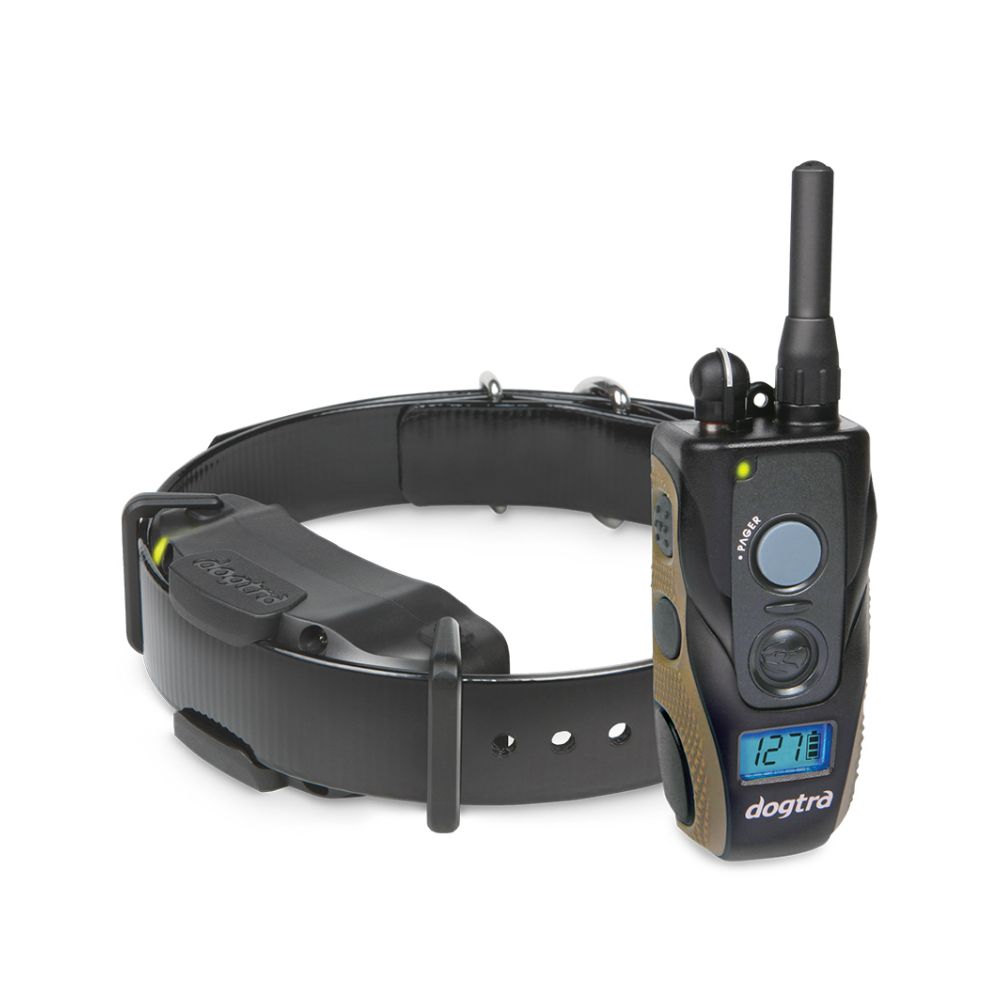Why does your dog bark when he hears the doorbell ringing? Through repetition, your dog has learned that the doorbell is a reliable cue or warning sign for the arrival of guests. When the doorbell rings, he knows there are visitors at your doorstep, without even seeing them.
They come with vibration and/or tone warning feature play the exact same role as the doorbell – through repetition, your dog will learn that the tone or vibration signal is a warning sign for the static stimulation that follows.
Vibration & Tone Cues in E-co llar Dog Training
llar Dog Training
When your dog is first introduced to the tone or vibration warning, the signal means nothing to him. However, through the consistent use of the warning feature during your training, your dog will learn to avoid static stimulation completely by simply responding to the vibration or tone signal alone.
K9electronics features dog shock collars that have tone, vibration, or both, depending on the brand and model of the collar that you choose. Both work exactly the same and are basically just personal preference – with consistency throughout your e-collar training, you will be able to use warning features without static stimulation to reinforce obedience and correct undesirable or destructive behavior of your dog.
Connecting Tone or Vibration with the Static Stimulation
Like humans, dogs have different levels of sensitivity. First thing on your to-do list after you purchase your electronic dog collar has to be determining the perfect level of static stimulation for your dog. While the collar can’t harm your dog regardless of the set level, setting it to high initially can startle your dog, causing him to vocalize.
When you are confident that you have found the proper setting – minimum level of static stimulation that triggers your dog’s response, without causing any fear or distress (working level) – you can start working on connection between tone or vibration warning and static shock:
- Find a suitable training place without distractions.
- Set the e-collar to your dog’s working level and fit it properly onto your dog’s neck.
- Attach a long, light lead to your dog’s regular collar and let the dog freely explore his training environment.
- Press and hold the warning feature (tone or vibration) and carefully observe your dog for any sign that he noticed the warning signal. Some dogs will stop, some will start turning or looking around, and some may even appear a bit startled.
- Release the warning feature button as soon as your dog responds to it and give a voice command your dog is familiar with, such as “come,” while tapping the Momentary button and gently guide your dog toward you.
- As soon as the dog starts moving toward you, stop applying the static stimulation, praise him when he reaches you, and release him with “OK.”
- Allow your dog some time to calm down and relax.
- Repeat the process.
Soon, your dog will make the connection between the warning signal and the static stimulation (just as with the doorbell and visitors). He will start responding to voice commands before you even have the time to start tapping the Momentary button. At that point, you and your dog are ready to start training with the tone or vibration warning alone.
Training with Tone and/or Vibration Feature
Once your dog has made the connection and understands that vibration or tone are warning signs of the following static shock, the training will only reinforce this association. He will learn that by responding to a warning signal, he will not only get praise but also avoid the static stimulation.
However, when your dog doesn’t respond to the tone or vibration warning signal, you have to repeat the voice command while tapping the Momentary button and guiding your dog into the desired response. This will strengthen your dog’s understanding that he needs to respond to the warning signal if he wants to avoid the static stimulation.
As with any other dog training method, consistency is the key for good results. When your dog refuses to obey a known command, ALWAYS repeat the command with adding the warning vibration or tone signal, and if he doesn’t respond to the warning feature, ALWAYS follow up by tapping the Momentary button.
K9electronics offers reliable, high-quality dog shock collars with tone and/or vibration warning feature and provides free, 40-page, step-by-step training guide with every e-collar purchase. The training guide will help you through all the steps of your e-collar use: from properly fitting the collar on your dog’s neck and finding the perfect stimulation level (working level) for your dog to problem solving, training basic commands and reinforcing them with proper use of the tone or vibration warning features.
If you need any help finding an ideal shock collar for your dog, don’t hesitate to contact us at 800-586-3780, by email, or via live chat.



Subscribeto get the latest dog training articles, latest offers & news.
You have Successfully Subscribed!